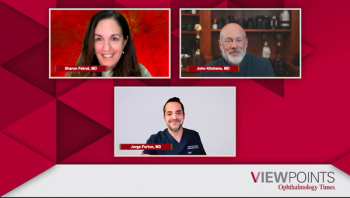
Short period of intensive outdoor activity results in increased choroidal/central corneal thickness
In a poster presented at the Association for Research in Vision and Ophthalmology’s 2022 annual meeting in Denver, Mamoru Ogawa, MD, noted that investigators have found that the choroidal and central corneal thicknesses increased over a very short period of time following intensive outdoor activity.
A team of investigators studied the effects of intensive outdoor activity on the eyes of children and found that the choroidal and central corneal thicknesses increased over a very short period of time following intensive outdoor activity.
Mamoru Ogawa, MD, from the Department of Ophthalmology, and the Laboratory of Photobiology, Keio University School of Medicine, Tokyo, presented the results in a poster at the Association for Research in Vision and Ophthalmology’s 2022 annual meeting in Denver.
“This is an important finding considering the rapidly increasing prevalence of myopia that has been recognized worldwide,” investigators noted.
“The increasing myopia prevalence globally is a relatively recent social health problem,” investigators noted, adding that outdoor activity is an evidence-based environmental factor that protects against myopia progression.
According to the presentation, the investigators conducted a study that included 17 children who participated in a program of activity that increased in outdoor duration over a week’s time from more than 2 hours on day 1, 3 hours on day 2, to 6 hours daily on subsequent days for a total of 6 days during the 2021 vacation at a summer camp in Japan.
All children underwent measurement of the refractive error, axial length, corneal and choroidal thicknesses, and tear fluid volume, and the children completed a questionnaire. These parameters were analyzed at the start and end of the program; the data from the left eyes were evaluated.
The children were a mean age of 12±1.0 years and 47.1% were girls. The investigators reported a significant (p < 0.001) change in the mean choroidal thickness between baseline and the final measurement, i.e., from 359.5±121.7 µm to 397.4±122.1 µm, and a significant (p < 0.002) change in the central corneal thickness from 579.0±45.6 µm to 584±44.6 µm.
Significant changes were not observed in the refractive error, axial length, or tear fluid volume over the course of the study.
“Our results suggested that intensive outdoor activity even for 1 week increased the choroidal and corneal thicknesses in Japanese schoolchildren,” investigators concluded. “Further studies are needed to assess the effects in more subjects over the long term.”
Newsletter
Don’t miss out—get Ophthalmology Times updates on the latest clinical advancements and expert interviews, straight to your inbox.












































.png)


